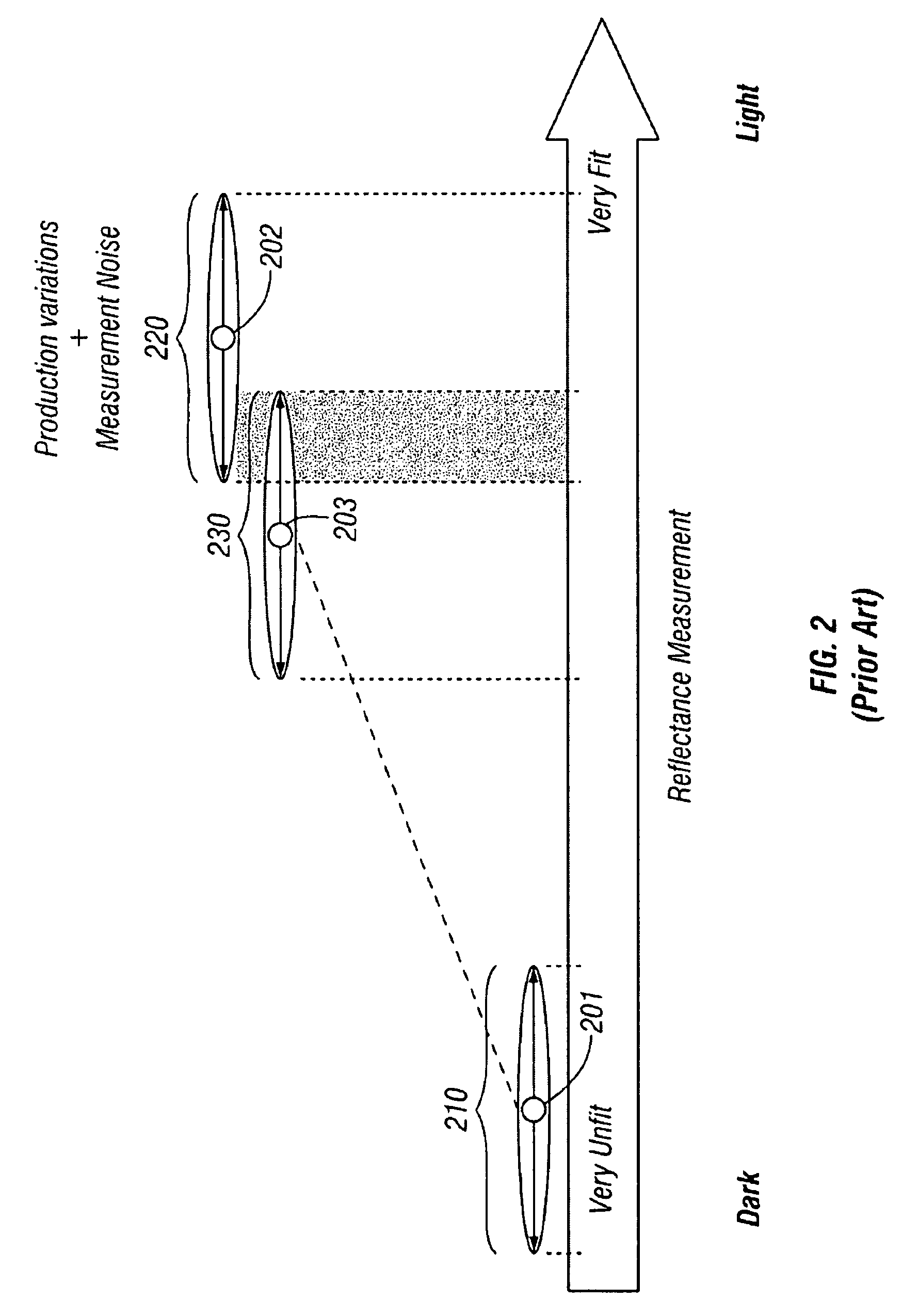Determining document fitness using sequenced illumination
a document fitness and sequence illumination technology, applied in the field of currency processing machines, can solve the problems of compounding difficulty, perfectly fit notes produced in one location being pulled from circulation by a bank in another location, and unique labor task problems in currency processing
- Summary
- Abstract
- Description
- Claims
- Application Information
AI Technical Summary
Benefits of technology
Problems solved by technology
Method used
Image
Examples
Embodiment Construction
[0025]FIG. 1 shows a currency processing machine 10 embodying the present invention and loaded with a batch feed of currency 12 prior to starting the currency processing cycle. This batch feed of currency 12 is fed into the currency processing machine one single note at a time. Single notes then travel on a conveyer past several different detectors before being deposited in one of the sort bins 14. Typically, a single sort bin is used to accumulate a single denomination of note at the end of the sort process.
[0026]Soil may be defined as a general distribution of dirt across the entire banknote. Ink wear, graffiti and stain detection are sometimes also described as soil detection. Soiling of banknotes increases the optical density of the notes and decreases their reflectance. One difficulty when performing soil detection is to match human perception and machine perception. This involves two major issues. The first is perception complexity, which includes determining soil categories a...
PUM
 Login to View More
Login to View More Abstract
Description
Claims
Application Information
 Login to View More
Login to View More - R&D
- Intellectual Property
- Life Sciences
- Materials
- Tech Scout
- Unparalleled Data Quality
- Higher Quality Content
- 60% Fewer Hallucinations
Browse by: Latest US Patents, China's latest patents, Technical Efficacy Thesaurus, Application Domain, Technology Topic, Popular Technical Reports.
© 2025 PatSnap. All rights reserved.Legal|Privacy policy|Modern Slavery Act Transparency Statement|Sitemap|About US| Contact US: help@patsnap.com



